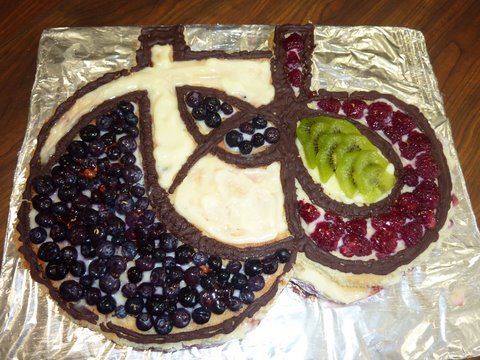Some people can be talented in several domains. In addition to his good work with Orfeo ToolBox on a supervised method to enhance segmentation results for categories of objects of interest, our intern, Olivier Canévet, has proven many times to be a very good baker. When he started planning to bake an OTB cake, at first we did not think he was serious. But with the end of his internship coming, he showed up one morning with this :
It took him no less than 7 hours in two days to do it, including building the cake pan out of carton pieces. It is needless to say it took us far less time to eat it once cut, and we can assure you that this cake was as tasty as beautiful !
Cheers !
Julien Michel
